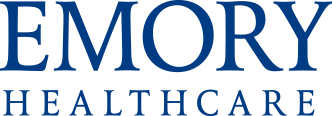A cerebral aneurysm occurs when an artery has a weak area. As blood flows into the area, it creates a balloon-like bulge (aneurysm) and pushes it outward. Your aneurysm may stay small or enlarge. Over time, a brain aneurysm may get large enough to break and bleed.
Cerebral Aneurysm Embolization
We provide aneurysm treatment with Guglielmi detachable coils (GDC) embolization.
To begin GDC embolization, we make a tiny cut near an artery in your groin. We insert a catheter (flexible, narrow tube) into the artery. We use real-time X-ray technology to guide the catheter through your blood vessels to the aneurysm.
After placing the catheter inside the aneurysm, we insert a micro-sized platinum coil into the bulge. We continue to add coils through the catheter until they fill the aneurysm. Finally, we remove the catheter.
When the aneurysm is filled with coils, blood can’t get into the bulge. The coils also promote scarring, which thickens the aneurysm walls. As a result, the aneurysm won’t enlarge or rupture.
Following your aneurysm treatment, you stay in the hospital overnight and go home the next day. At home, you can return to most activities. You'll need to avoid strenuous activities for a few days.


